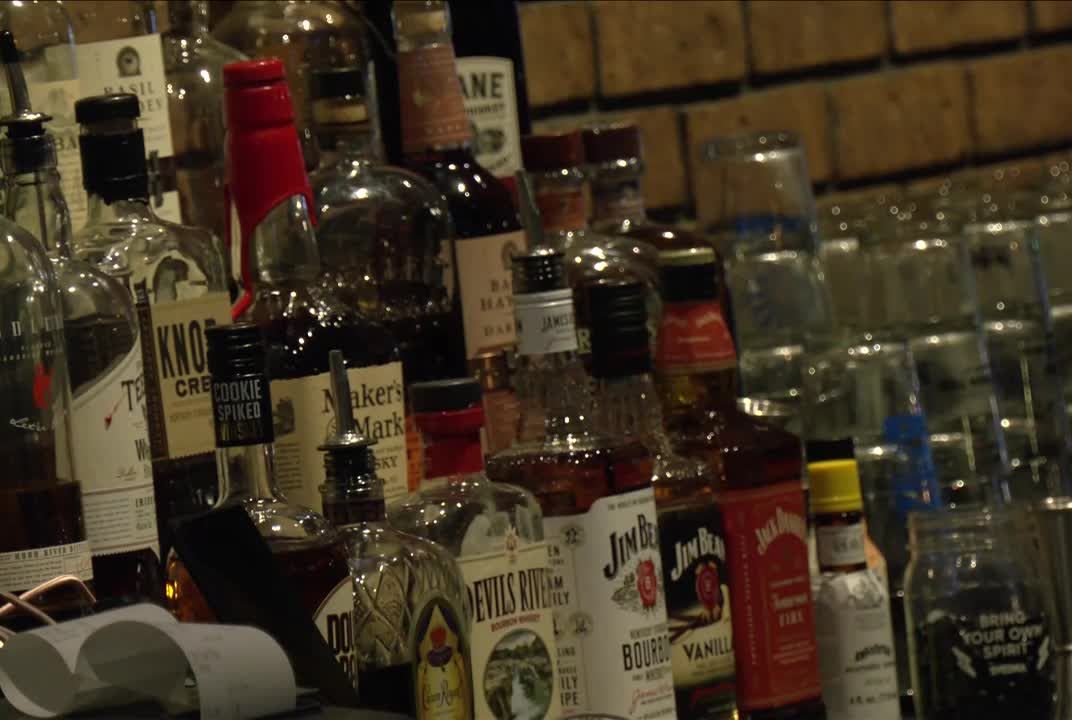Raise a glass: A lot of top-shelf booze is more within reach this holiday season

(Photo: WHEC)
Booze will cost you more this holiday season than last — but not much more. And there are ways to increase the bang for your buck while grabbing a round of drinks or bringing a bottle to a gathering.
As is usually the case, alcohol is still generally cheaper at home than in bars and restaurants, and beer remains lower-priced than many liquors. But some spirits, including many tequilas and whiskeys, are seeing noteworthy price drops that have made even top-shelf bottles a bit more affordable.
Whiskey bought for at-home consumption is nearly 2% less expensive, on average, than a year ago, federal inflation numbers released Wednesday show. Beer served out of the house, on the other hand, is about 4% pricer.
And on Thursday, federal regulators turned a spotlight on retail booze prices, accusing a major U.S. liquor distributor of favoring big chains like Costco and Kroger over independent shops, making it harder for smaller operators to compete.
So far, at any rate, many price moves for alcoholic beverages have been relatively modest. Booze costs rose nearly 15% from the first half of 2019 to the first half of this year, less than the 23% jump in consumer prices at large during that period. As of last month, alcohol costs were up only 1.8% since the year before, while inflation overall was 2.7%.
Sluggish demand has helped keep prices in check.
“It’s been a pretty rough year for alcohol sales,” said Marten Lodewijks, president of the U.S. division of the beverage industry data firm IWSR. “It’s been fairly consistent across the board: a general pulling back of consumer spend on alcohol, and spirits in particular.”
That trend coincides with a broader caution rippling through the economy. Retail sales around Thanksgiving showed many households are still eager to spend, but only at the right price. Many brands are chasing value-wary shoppers’ wallets with increasingly competitive deals and discounts.
“As a nonessential item, it hit consumers quite hard,” Lodewijks said of inflation’s impact on alcohol in recent years. “When prices on everything else started going up, suddenly that extra $5 on a bottle of spirits was meaningful.”
His firm flagged in September that sales volumes had declined more than expected during the first seven months of this year for beer, wine and spirits alike; the only exception was in canned cocktails, which beverage makers have been pushing heavily. The falloffs came amid growing interest in nonalcoholic mocktails and signs that younger people are thinking twice about causal drinking. Shares of Diageo, a major importer of Scottish whiskey, and Pernod Ricard, which imports Absolut Vodka and Jameson whiskey, are each down by double digits since the start of this year.
U.S. beer sales have also suffered, squeezing brewers who have faced a yearslong pullback after the previous decade’s craft beer boom. Even so, beer remains the cheapest and by far the most popular alcohol at full-service restaurants, accounting for over half of booze sales in those settings this year, according to data released Tuesday by the transaction processor Toast.
Typically, weaker sales encourage price cuts, but this week’s inflation data showed beer at bars and restaurants posting the biggest jump — climbing 4% between November 2023 and last month. Lodewijks said at least two factors are likely at play: Many brewers have been passing on higher costs to their customers and chasing higher-dollar drinkers.
“While mainstream and below beer has seen major volume losses, premium and above beer has generally fared very well,” he said. “Now, consumers won’t be fooled into thinking a mainstream beer is premium simply by raising prices, but this could be an attempt by some brand owners to change the perception of their brand by moving it up the price ladder.”
There are still big unknowns when it comes to brewers’ costs. President-elect Donald Trump’s victory in November led some beer makers to voice fresh worries about tariffs, after his first round hit the aluminum and steel-reliant industry in 2018. Even Modelo importer Constellation Brands, which had waved off trade concerns before the election, saw its stock fall 3.5% after Trump proposed 25% tariffs on goods from Mexico last month, before shares steadied.
In the meantime, some of the industry’s headwinds since its pandemic-era boom are still benefiting consumers this holiday season.
The price of agave, a key ingredient in tequila and mezcal, has fallen dramatically since 2022, when it peaked at 32 Mexican pesos per kilogram, or about $1.60. By February 2024, 1 kilogram of agave cost just 5 Mexican pesos, or less than 30 cents. Tequila manufacturers took advantage as demand soared, producing trendy luxury tequilas — many of them at lower prices. That has made it easier to buy a high-quality bottle in recent years without spending more, Lodewijks said.
“What consumers are saying is, ‘I’m not going to spend $50, but spending $30, I can get a really good tequila for that price,’” he said.
Tequila is still the priciest liquor you can order at a sit-down restaurant, averaging $13.48 per drink as of the third quarter, the Toast data shows. But it’s the only booze whose costs have remained basically flat for the past year.
Premium bourbons have propped up the U.S. whiskey industry, which is relatively strong at the moment even as Scottish and other imported options struggle, Lodewijks said.
Still, whiskey was the only at-home alcoholic beverage to see prices outright decline since last year, inflation data shows. Whiskey distillers have seen softer demand in key markets like California, Florida and Kentucky, according to IWSR. But Lodewijks said it could be that producers have managed to lower their costs through more efficient production.
“Shop around and do your research, and you can really find good-quality product at a lower price,” he advised holiday quaffers and bottle-gifters. “Often it’s better than the stuff you’re paying more for.”